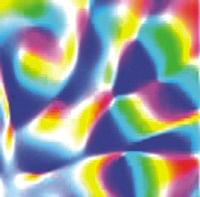|
Lifestyle
The Meaning of Colours
Syeda Shamin Mortada
 Some of us love to watch the sky turn deep amber during sunset; many like to live in a lush green environment, others go berserk to witness the seven colours of the rainbow, while some find serenity by simply gazing at the aquamarine sea. Some of us love to watch the sky turn deep amber during sunset; many like to live in a lush green environment, others go berserk to witness the seven colours of the rainbow, while some find serenity by simply gazing at the aquamarine sea.
Colours influence us in more ways than we understand. It affects our emotions and feelings. Some colours tend to uplift our mood whilst some make us depressed or give us the “blues”. Before a performance, people are said to be more relaxed in green rooms while weight lifters are known to do their best in blue gyms. Moreover each country, culture and religion gives emphasis to certain colours where each hue symbolises something special. Colour has played an important role in the life of human beings since ancient times. Many contemporary artists and philosophers attributed spiritual qualities to colours. Natural scientists and Renaissance physicians considered colour to be the soul of life, the root of all existence; the four elements Earth, Air, Fire, and Water were given the colours of yellow, black, red, and white respectively. The father of medicine Hippocrates used colour extensively in medicine; another medicine man of the 11th century Avicenna, believed a person's physical colouring indicated his predisposition to various diseases and always took account of the patients colouring while making a diagnosis.
According to the Hebrew tradition, Adam or the first man meant 'red' or 'alive'; to the ancient Egyptian red was the colour of the sun god 'ra' which the Romans later linked to Mars, the God of War. Today, according to the experts from the University of Leeds, the colour red is associated with 'strong', 'fast', 'dynamic', 'active', 'brave' and 'exciting'. Superstitious people think red frightens the devil. Likewise blue was used for protection against witches, who supposedly dislike this colour. Blue devils stand for feeling of depression. 'Blue blood' is a person of noble descent; the fair complexioned aristocrats due to their visible blue veins first used the term. In Iran blue is the colour of mourning. In some countries black is the colour of mourning and in some it's the colour of the moon, white. This colour is known to be associated with purity, peace and optimism. Again white is common bridal attire in many countries in others it is worn by widows; in Ancient Greece the temple dedicated to goddess Athena was made in white marble, signifying virginity. The royal colour purple denotes authority and rank. Cleopatra loved the colour purple. To obtain one ounce of Tyrian purple dye, she had her servants soak 20,000 Purpura snails for 10 days. Leonardo da Vinci believed the power of meditation improved 10 times when done in a purple light. Colour theory says that purple in a child's room develops the imagination. Aristotle in the 4th century B.C considered blue and yellow to be the true primary colours, relating as they do to life's polarities: sun and moon, male and female, stimulus and sedation, expansion and contraction, out and in.
An environmental study conducted by visual arts professors in the University of Alberta, helped fourteen severely physically and mentally handicapped children. It decreased their aggressive attitude and brought down the blood pressure level. This was done by changing the children's colour and lighting environment. It involved substituting yellow and blue for orange, white, beige and brown and with replacing fluorescent lights with full spectrum ones. Interestingly, the same effects were found in both blind and sighted children conducted in another study.
It is a known fact that the earliest forms of therapy included the use of colour gems and sunlight. Colour therapy was based on the ancient art of using colour and light to treat diseases. Today there is a wide range of therapies available which use the power and effects of colour. Many practitioners believe that by altering the colours that surround us we can improve our physical and mental condition. They advice on how to make the best use of colour in one's lifestyle, be it diet, clothing, decoration of home or work place.
It is a colourful world we live in and there is very little doubt on the influence it has on us. Let us therefore surround ourselves with colours we deem to be positive and let the magic of colours enhance our health and well-being.
Copyright
(R) thedailystar.net 2007 |
|
